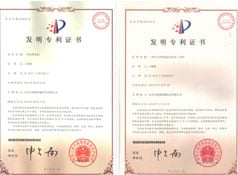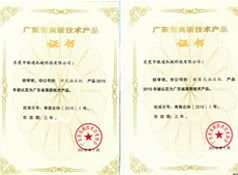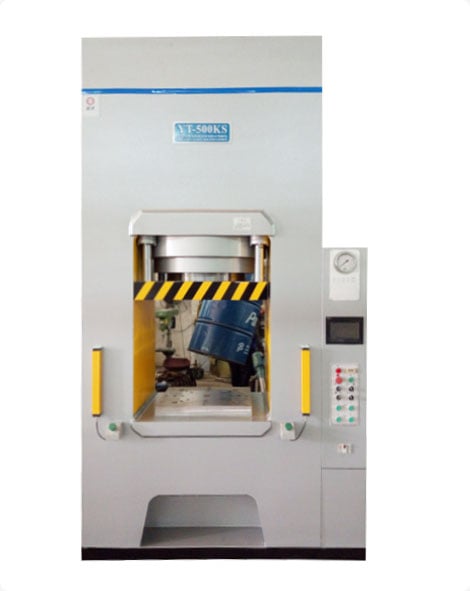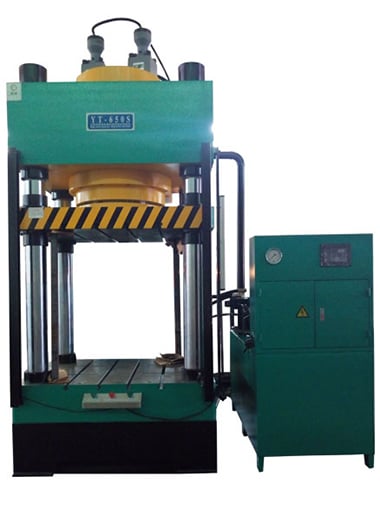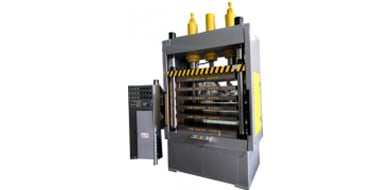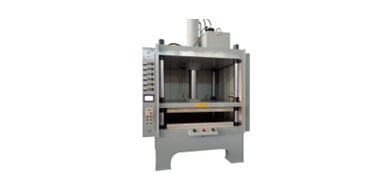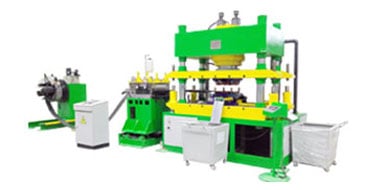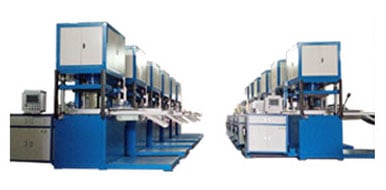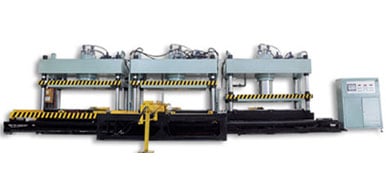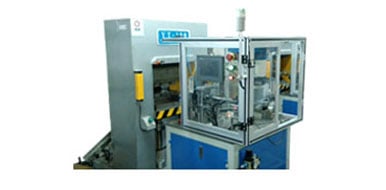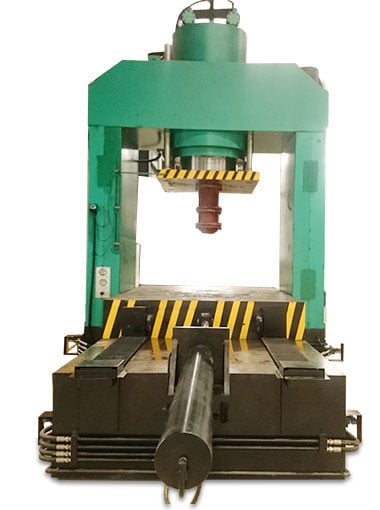How to Make Hydraulic Press Plates
time:2023-09-29 views:(点击 991 次)Hydraulic presses are machines that use liquid pressure to apply pressure, often used to compress or shape metal. They may also be used to crush items such as bowling balls, soda cans, or metal tools.
Hydraulic presses are relatively straightforward machines with few moving parts and are typically lubricated via pressurized oil for quiet and less-prone-to-breakdown operation.
Stretch forming
Stretching forming allows manufacturers to achieve precision and accuracy when shaping long metal parts, and is suitable for shaping complex, curved shapes that may be hard to form with other methods. Furthermore, stretching forming is cost-effective solution suitable for aerospace applications as well as many other industries.
Stretch forming is a method of simultaneously stretching and bending sheet metal, where parts are gripped between two hydraulically operated jaws connected to a form block and pulled by pneumatic or hydraulic cylinders to stretch beyond their yield point and form over a die. Stretch forming has applications across industries like aerospace and automotive as it produces contoured parts with complex contours demonstrating its versatility and adaptability for multiple needs.
Stretch forming produces parts with tight tolerances and excellent repeatability, as well as reduced material waste and post-processing requirements. Furthermore, this technique can induce work hardening within the material for increased strength while simultaneously decreasing residual stress and spring back - an ideal option when forming various materials such as stainless steel, clad metals or aluminum.
Stretch forming can reduce tooling costs, making it more cost-effective than alternative forming methods. Furthermore, its high production rates allow manufacturers to meet production goals without labor expenses becoming an issue. Furthermore, its accurate stretching process guarantees formed parts always meet design specifications, eliminating inspection and rework needs altogether.
Stretch forming is a versatile and cost-effective manufacturing technique for creating metal parts with precise geometry and tight tolerances, making it particularly suited to the aerospace industry where dimensional accuracy is of utmost importance. Furthermore, stretch forming offers additional benefits including minimal material distortion and superior surface finish quality.
Powder compaction
Powder compaction is an efficient and versatile technique for shaping metal and ceramic powder-based materials, often through use of dies to press them under high pressure. Once compacted, this green compact can then be subjected to a sintering process to achieve its final shape and strength by means of diffusion processes and thermal conduction.
Powder compacting is a complex forming process that involves simulating the mechanical behavior of material and its interactions with tools using finite element modeling techniques that take into account friction between powder particles and compressibility of material. Models can then be used to predict tool loading, green density distribution and distortions that result in improved processes or reduce production times for components produced from them.
A CAD model can assist with the design of a hydraulic press for powder compaction. A multi-action powder compacting press typically has three main rams that apply downward force, one middle "cavity" ram that sets compaction height, and one lower knockout ram which ejects powder. All three rams can be adjusted separately to control compaction pressure levels to meet desired part sizes.
Powder compacting rams may include cooling systems to prevent overheating and maintain quality ejected material. This is an integral component of powder compaction forming, as overheating can damage powder particles. These rams may be constructed from cast iron, aluminum, or stainless steel depending on what materials they're made out of.
Sintering processes may result in residual porosity, but this can easily be remedied using hot pressing (HIP). HIP involves heating powder at very high temperatures before quickly cooling it back down, leading to dense isotropic materials with minimal internal stress. Unfortunately, sintered metal grains tend to be larger than their powder counterparts which may compromise strength and ductility.
Forging
Forging is a metal working technique dating back centuries that involves manipulating and shaping metal into its desired form. This ancient artform can be used to produce hardware, hand tools, edged weapons and jewelry items as well as being perfected over time to produce many essential products used today. Today it uses various technical methods and heavy duty equipment.
Forged metal parts are known to be strong, durable and have superior mechanical properties than cast components. Not only does forging improve strength, it allows greater degrees of customization as custom designs can be produced at lower production costs with greater material availability. Furthermore, forging can help to increase quality by decreasing voids and shrinkage.
Forging is a method by which metal is heated and deformed under high pressure. This may involve induction or frictional heating techniques; occasionally, hand forging may also be done. When completed successfully, forged products tend to be stronger and more durable than cast items that may contain defects like voids and segregation.
Forging is advantageous because it eliminates the need for multiple joining points such as welding or soldering. This helps increase strength while decreasing weight; additionally, forging processes can be carried out automatically to speed production while cutting raw material costs.
Forging also offers many other advantages, including its capacity to work at high volumes - saving both money and time over time. Furthermore, forging can also be used to create parts with complex geometries using open die or ring rolling processes.
Forged metal is highly resilient to fatigue, with excellent grain flow which increases its directional strength. As such, forging is ideal for use across numerous industries including aerospace and automotive - it also requires lower temperatures and shorter lead times than casting processes.
Molding
Molding is a manufacturing process used to form liquid or pliable raw material into its desired form using a rigid mold, typically created from an accurate model or pattern of its final product. There are multiple forms of molding - injection, blow and rotational. Injection molding is the most widely used type, commonly employed to manufacture toys and car parts from plastic materials as well as some metal and glass items; injection can even use thermoplastic or rubber.
Injection molding is a labor-intensive process and difficult to achieve consistent quality, thus discouraging its use for large-scale production purposes. However, prototyping with injection molding may prove a cost-effective and flexible solution that can also be combined with other processes to lower costs and shorten time to market.
Blow molding, in which hollow molds are used to shape and join hollow plastic or glass objects, is another type of molding technique. It's particularly suitable for creating smaller objects and requires high degrees of precision for products like containers and bottles; and is even used in automotive components production.
Moulding, also known as coving, is a strip of material with various profiles used to cover transitions between surfaces. Available in thousands of design combinations and adding timeless decorative appeal to any structure, moulding can be made out of materials like plaster, plastic, or even gypsum cement.
Molds come in various types and designs; selecting one depends on your project requirements. Material compatibility must also be taken into account as heavy molds tend to be more durable and more expensive.
Hydraulic press machines are an invaluable resource that can be used for forging, clinching, moulding, punching, deep drawing and metal forming. In contrast to mechanical presses, hydraulic presses compress much greater amounts of material more rapidly - especially helpful when dealing with extremely hard or brittle materials like stone. Furthermore, hydraulic press machines offer greater accuracy allowing users to crush metal without deforming it in any way.
Link to this article: https://www.ihydraulicpress.com/nsn/4804.html
Hot Articles
-
How to Make Hydraulic Press Pocket Super-Viral Videos
The Hydraulic Press Channel is a YouTube channel dedicated to crushing things with hydraulic presses. Hosted by Lauri Vuohensilta and Anni, its vi……
-
How a Hydraulic Press Makes Things Heat Up
There is something immensely satisfying about watching things get crushed under a hydraulic press, and YouTube channels like Hydraulic Press Chann……
-
Can a Hydraulic Press Make a Diamond Shatter?
Diamonds may be among the hardest materials on Earth, but that doesn’t make them indestructible. A direct hit from a hammer or enough pressure……
-
How to Make a Hydraulic Rosin Press
Building an in-home hydraulic rosin press doesn’t require welding skills or being comfortable swinging a hammer; there are numerous DIY opti……
-
How to Make a Hydraulic Shop Press
An effective hydraulic shop press can help you to bend metal, stamp materials and more. There are various types and sizes of shop presses suited f……
-
How Much Does a Hydraulic Press Weigh?
Hydraulic presses are powerful tools capable of exerting considerable force. They can be used for tasks as diverse as crushing cars or creating fa……
-
How Much Money Does Lauri Vuohensilta Make With His Hydraulic Press Channel?
Lauri Vuohensilta of Finland launched his Hydraulic Press Channel in 2015 and has seen it gain immense popularity ever since. The videos displayed……
-
How to Make a Hydraulic Shop Press
Shop presses are mechanical tools used for bending, straightening and stamping parts. Their hydraulic systems deliver controlled power that applie……
Latest News
-
Hydraulic Press Channel – How Much Does the Hydraulic Press You Tube Channel Make?
Lauri Vuohensilta of The Hydraulic Press Channel, with over 3.7 million subscribers, uses his family shop’s hydraulic press to destroy objects……
-
How Much Is a Hydraulic Press?
Hydraulic presses are powerful machines designed to multi-task. From forming, clinging, molding, deep drawing and blanking, to safer maintenance w……
-
How to Make a Tabletop Hydraulic Press
Hydraulic presses play an integral part of manufacturing and production processes, from shaping machine components to crushing waste or scrap. The……
-
What Is a Hydraulic Press?
Hydraulic presses are machines used to generate force by pressing material against one another, using an oil tank as power source for its hydraulic ……
-
How Does a Hydraulic Press Make Things Heat Up?
Hydraulic presses are mechanical machines which transfer energy by using liquid pressure as force. They’re versatile machines used for various……
-
How Much Does a Hydraulic Press Cost?
Hydraulic presses are powerful tools in any workshop that allow users to shape and manipulate materials with great precision. But before making yo……
-
How to Make a Hydraulic Apple Press
Few things encapsulate autumn like freshly-pressed cider. Learn how to build your own hydraulic apple press with this straightforward DIY project.……
-
How to Make a 150 Ton Hydraulic Press
Hydraulic presses are machines that use pressure to force pistons into cylinders, often found in manufacturing, automotive repair or general shop ……


